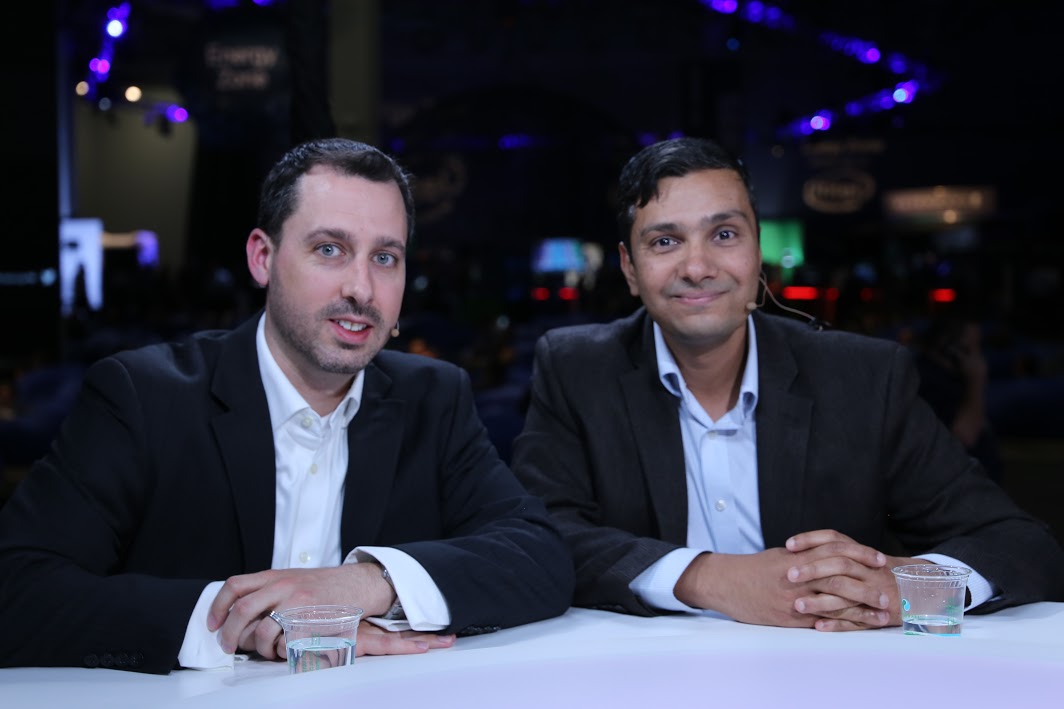 BIG DATA
BIG DATA
 BIG DATA
BIG DATA
 BIG DATA
BIG DATA
Digital transformation is a phrase that has been kicked around quite a bit lately as more and more companies seek to fully modernize everything from their networks and data centers to compute and even storage arrays. Software-Defined Storage is using software to manage the data plane on any storage device or array on a given network, explained Narasimha Krishnakumar (pictured, right), director of product management at Dell EMC.
“There are different flavors of software-defined storage, which we are here to talk about,” Krishnakumar said. “One is hyper-converged infrastructure, which VMware is pioneering with its vSAN technology, and we also have the Dell EMC ScaleIO product that is offering customers the capability to run multiple workloads from multiple hypervisors.”
Krishnakumar and Jason Brown (pictured, left), consultant product marketing manager at Dell EMC, spoke with Paul Gillin (@pgillin), host of theCUBE, SiliconANGLE Media’s mobile live streaming studio, during the Dell EMC World event in Las Vegas, Nevada. (* Disclosure below.)
Brown and Krishnakumar spoke at length about SDS, why its adoption is being sought by organizations who are embracing digital transformation, but also have a lot of data on legacy storage arrays and systems and are not ready to migrate all that data just yet.
Although there are some companies ready to go for broke and invest the expense, hours, downtime and risk to undergo the digital transformation to a state-of-the-art enterprise network, there are many others who, for a myriad of reasons, are not ready to take those steps just yet, Brown and Krishnakumar explained. For some of those companies, SDS makes a lot of sense because, for whatever reason, those companies have legacy hardware and/or large amounts of data that cannot be moved, and adopting SDS is the best decision they can make under those circumstances, they stated.
“Software-defined storage does that by giving you common hardware with all the goodness, the reliability, the enterprise, great feature-function set, the scalability and performance [that] currently lives in the software itself,” Brown said. “And, therefore, just gives you a lot simpler data center to not only manage, but also build.”
And while many of those companies have in fact decided to adopt an SDS solution, there are still concerns that need to be addressed, such as which hardware can be transformed, how it should be grouped or what level of control the SDS should have, Krishnakumar said.
He also added that while SDS technology has become mainstream, customer adoption is a journey. Dell EMC recommends it is best to use a step-by-step approach, starting with smaller changes and increasing until all parties agree the customer is receiving maximum benefit SDS can give.
“The portfolio — Dell EMC, Dell Technologies portfolio — has all the assets for our customers to do this piece-by-piece journey,” Krishnakumar said. “It’s an evolution. It’s not going to happen overnight. We believe it’s an evolution, and customers will slowly start embracing software defined storage.”
Watch the complete video interview below, and be sure to check out more of SiliconANGLE’s and theCUBE’s independent editorial coverage of Dell EMC World 2017. (* Disclosure: TheCUBE is a paid media partner for Dell EMC World. Neither Dell nor other sponsors have editorial influence on content on theCUBE or SiliconANGLE.)
Support our mission to keep content open and free by engaging with theCUBE community. Join theCUBE’s Alumni Trust Network, where technology leaders connect, share intelligence and create opportunities.
Founded by tech visionaries John Furrier and Dave Vellante, SiliconANGLE Media has built a dynamic ecosystem of industry-leading digital media brands that reach 15+ million elite tech professionals. Our new proprietary theCUBE AI Video Cloud is breaking ground in audience interaction, leveraging theCUBEai.com neural network to help technology companies make data-driven decisions and stay at the forefront of industry conversations.